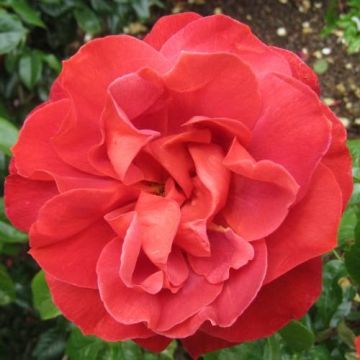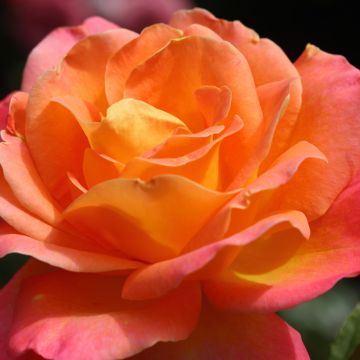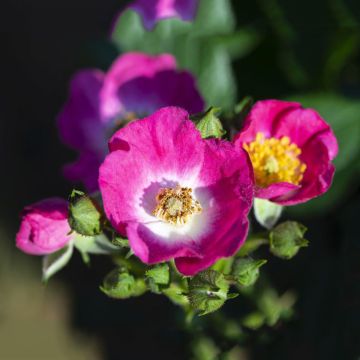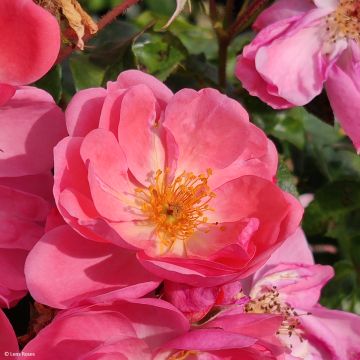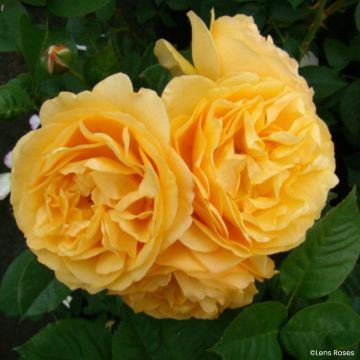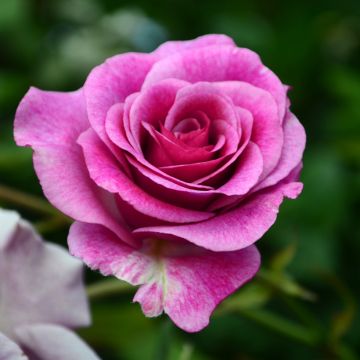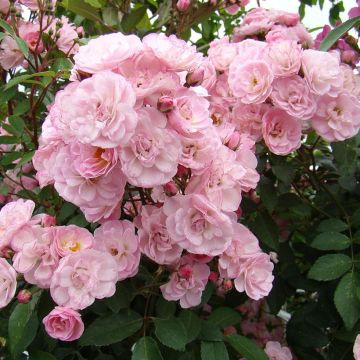

Rosa x Thé PARFUMA 'Comtesse Diana' - Hybrid Tea Rose


Rosa x Thé PARFUMA 'Comtesse Diana' - Hybrid Tea Rose


Rosa x Thé PARFUMA 'Comtesse Diana' - Hybrid Tea Rose
View more pictures
Hide images

Thierry P.

August flowering - image 5 - The flowers have very small white stripes.
Thierry P. • 84 FR
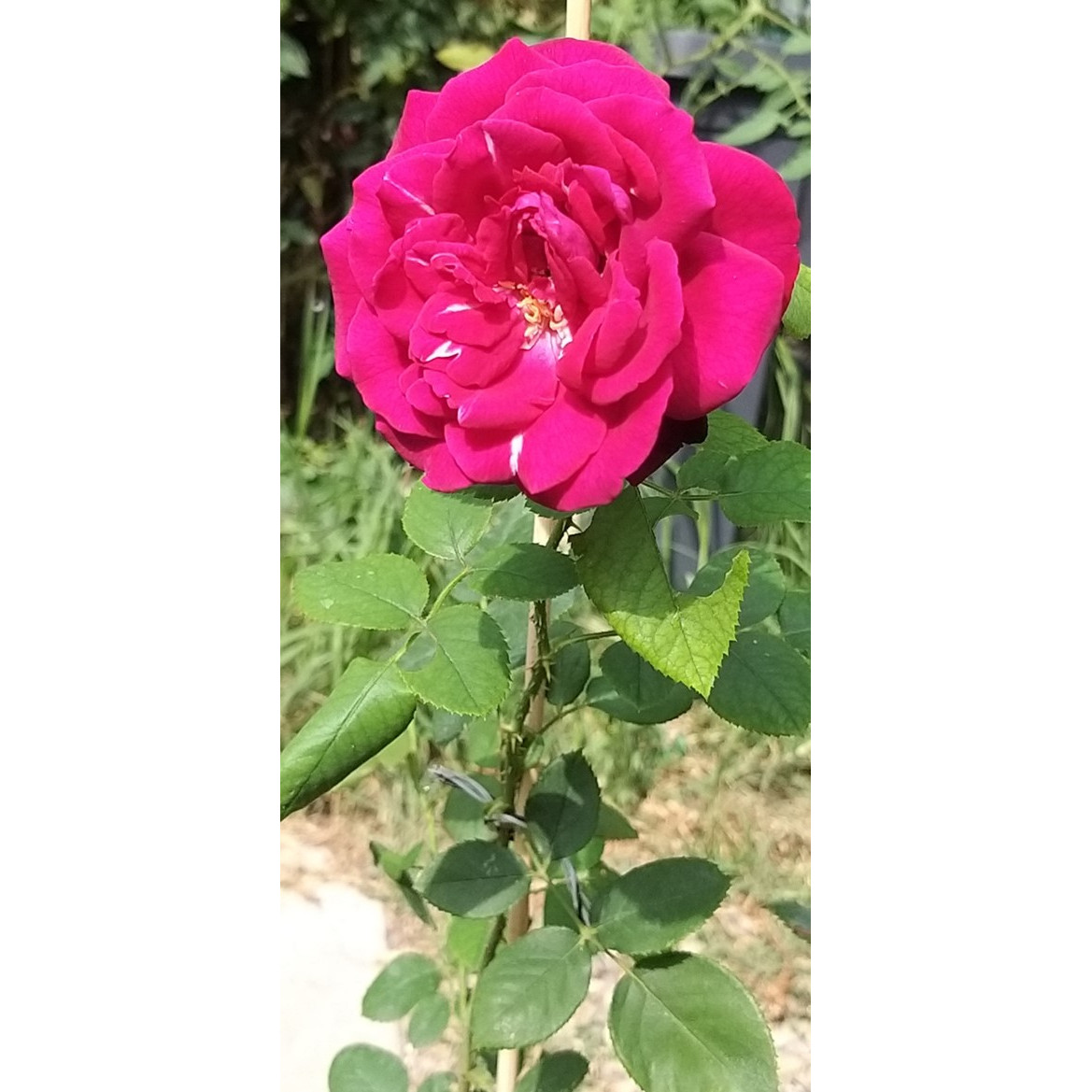
Thierry P.

August flowering - image 3 - The blooming flower.
Thierry P. • 84 FR
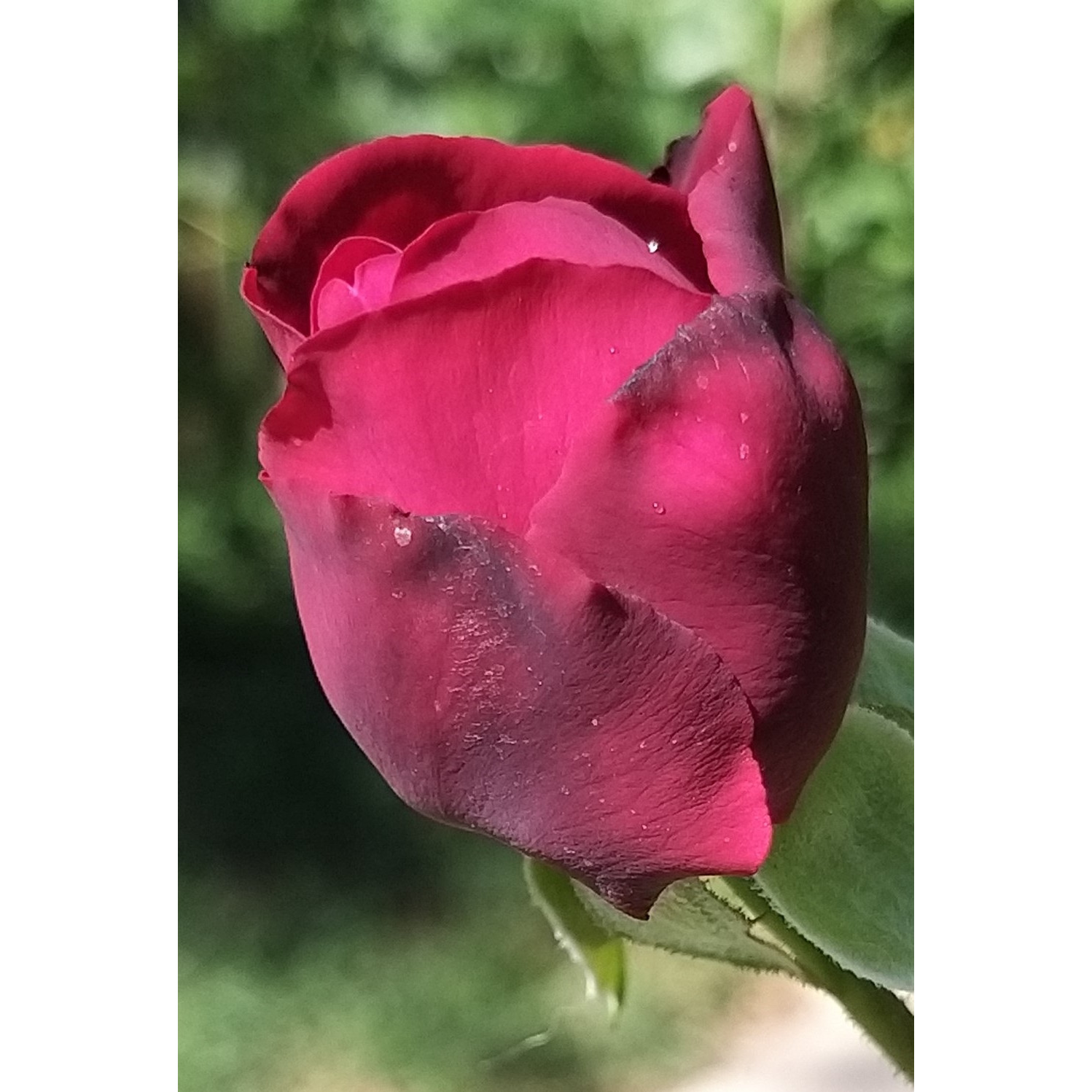
Thierry P.

August flowering - image 4 - In bud.
Thierry P. • 84 FR
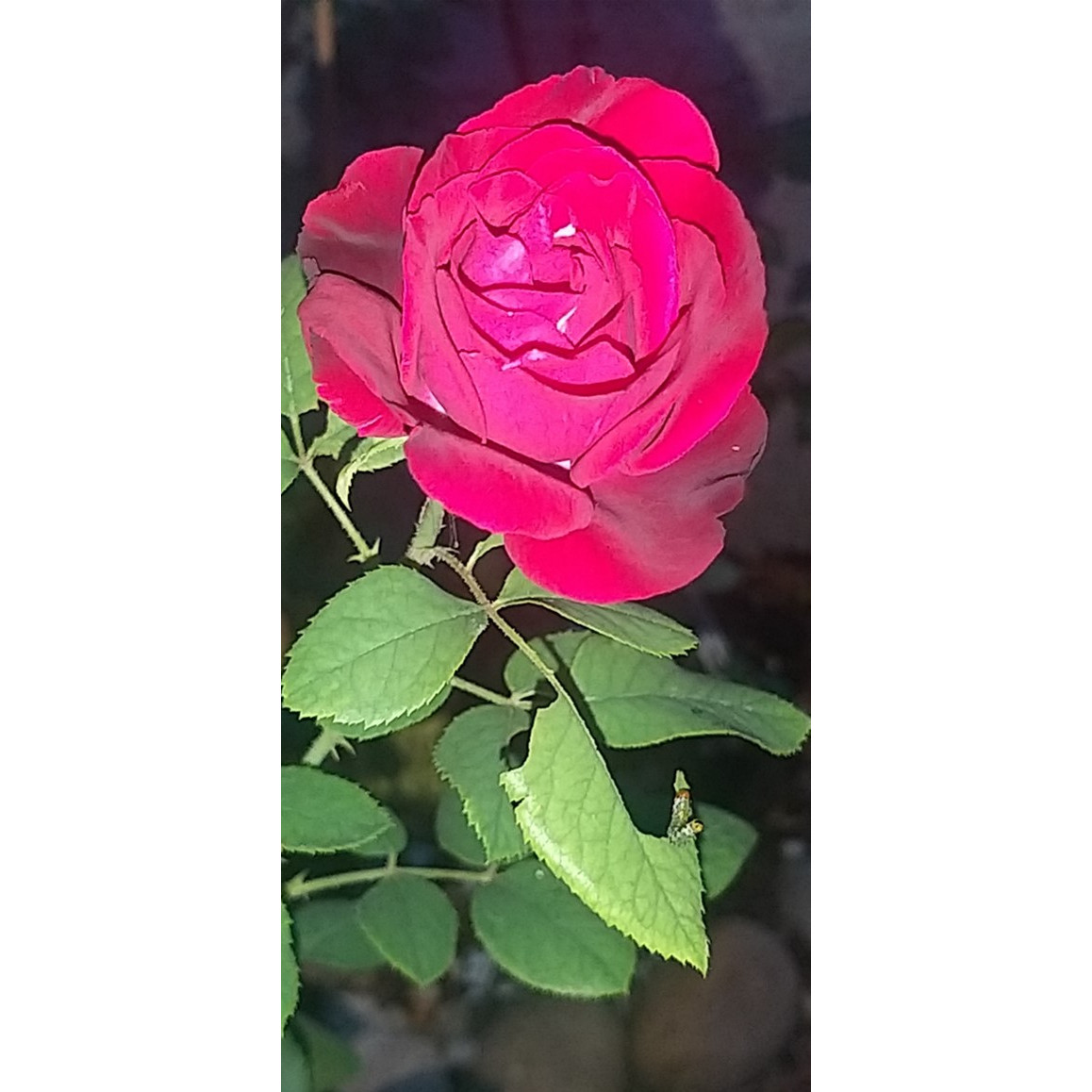
Thierry P.

August flowering - image 2 - In the company of a rose sawfly.
Thierry P. • 84 FR
Rosa x Thé PARFUMA 'Comtesse Diana' - Hybrid Tea Rose
Rosa x Thé PARFUMA® Comtesse Diana® 'Kordiagraf'
Kordiagraf, Mme de Montespan
Thanks to Katy for the order preparation and Shauna from the shipping department, the received rose bush is small but appears healthy to me. I have repotted it to allow it to grow, and now I'm eagerly waiting to see its progress before planting it... Note: It was received with the essential white variety label 'Globe Planter' (necessary for identifying the rose bush in all seasons).
Thierry, 01/09/2021
Special offer!
Receive a €20 voucher for any order over €90 (excluding delivery costs, credit notes, and plastic-free options)!
1- Add your favorite plants to your cart.
2- Once you have reached €90, confirm your order (you can even choose the delivery date!).
3- As soon as your order is shipped, you will receive an email containing your voucher code, valid for 3 months (90 days).
Your voucher is unique and can only be used once, for any order with a minimum value of €20, excluding delivery costs.
Can be combined with other current offers, non-divisible and non-refundable.
Why not try an alternative variety in stock?
View all →This plant carries a 6 months recovery warranty
More information
We guarantee the quality of our plants for a full growing cycle, and will replace at our expense any plant that fails to recover under normal climatic and planting conditions.

Description
The Bush 'Comtesse Diana' from the Parfuma collection is from Globe Planter in partnership with the German rose breeder Kordes Rosen, known for their particularly floriferous, hardy, and disease-resistant creations. This modern tea hybrid will charm with its well-double roses, whose purple-violet dress perfectly matches the sophisticated sensuality of its fragrance. In the garden, it is a beautiful, easy-to-grow plant which blooms from June to October and requires no treatments. Multiple award winner and holder of the highly demanding German A.D.R label in 2014, this rose has a place in every garden. Its beautiful, wonderfully scented roses are perfect for arrangements.
The Bush 'Comtesse Diana/Mme de Montespan' 'Kordiagraf' is a recent introduction by the German rose breeder Kordes (2012). This lovely creation is part of a series of roses, the 'Parfuma', selected for their fragrance, among other criteria. It is characterised by an upright habit and strong vigour. This bush reaches about 1m (3ft) in height and 50cm (20in) in width. Its sturdy, thorny, slightly stiff stems bear reddish young shoots that unfold into dark green, glossy leaves, divided into five wide, finely toothed leaflets, immune to diseases. Its flowering is long, repeating in successive waves from June to October if the soil remains moist. The rounded purple flower buds, surrounded by green sepals, open into turbinate flowers, 8 to 10cm (3 to 4in) wide, with a purple-pink heart but a more violet-purple periphery.
Their fragrance has been analysed by perfumers, describing it as noble and sensual, revealing floral and fruity notes that blend perfectly. The classic rose fragrance is accompanied here by a touch of lemon, rose geranium, and lychee. The fruity top note, perceived first, combines elderflower, peach, and a hint of mirabelle plum. The base note combines honey and finely earthy notes. The scent of the roses is at its peak at noon and in the evening after a hot and sunny day.
This modern 'Comtesse Diana' rose is a gem that deserves to be discovered by lovers of scented roses. Elegant and voluptuous, it will find its place in the garden in a large rose bed, at the front of a shrub bed, or as a solitary plant in a well-maintained small garden. The rich colour of its flowers easily complements all pastel blooms and the range of blues, purples, and violets. Consider planting it near easy-to-grow plants like Chinese peonies, hardy geraniums (Geranium Blue Cloud, Anne Folkard, Nimbus, Orion), bellflowers (lactiflora, rapunculoides), catmints, perennial salvias, foxgloves... Dwarf buddleias also make lovely companions for bush roses. Its flowers can be used to create sumptuous bouquets that will delicately perfume the house.
Report an error about the product description
Rosa x Thé PARFUMA 'Comtesse Diana' - Hybrid Tea Rose in pictures


Plant habit
Flowering
Foliage
Botanical data
Rosa
x Thé
PARFUMA® Comtesse Diana® 'Kordiagraf'
Rosaceae
Kordiagraf, Mme de Montespan
Cultivar or hybrid
Planting and care
Planting your rose requires some preparation. Begin by working the soil to a depth of 25 cubic cm and adding a base amendment like blood, fish, and bone to the bottom of the planting hole. Remove the plant from its pot and position it by covering the top of the root ball with 3 cm (1in) of soil. Refill the hole and water generously to eliminate any air pockets. It's essential to water the rose regularly for a few weeks during dry weather to help the roots grow. Use a special rose fertiliser that stimulates plant flowering. Choose a sunny location or partial shade to plant your rose in hot regions.
Roses may develop unsightly spots at the end of summer, but this is a natural occurrence and doesn't harm the rose's growth.
Planting period
Intended location
Care
-
, onOrder confirmed
Reply from on Promesse de fleurs
Haven't found what you were looking for?
Hardiness is the lowest winter temperature a plant can endure without suffering serious damage or even dying. However, hardiness is affected by location (a sheltered area, such as a patio), protection (winter cover) and soil type (hardiness is improved by well-drained soil).

Photo Sharing Terms & Conditions
In order to encourage gardeners to interact and share their experiences, Promesse de fleurs offers various media enabling content to be uploaded onto its Site - in particular via the ‘Photo sharing’ module.
The User agrees to refrain from:
- Posting any content that is illegal, prejudicial, insulting, racist, inciteful to hatred, revisionist, contrary to public decency, that infringes on privacy or on the privacy rights of third parties, in particular the publicity rights of persons and goods, intellectual property rights, or the right to privacy.
- Submitting content on behalf of a third party;
- Impersonate the identity of a third party and/or publish any personal information about a third party;
In general, the User undertakes to refrain from any unethical behaviour.
All Content (in particular text, comments, files, images, photos, videos, creative works, etc.), which may be subject to property or intellectual property rights, image or other private rights, shall remain the property of the User, subject to the limited rights granted by the terms of the licence granted by Promesse de fleurs as stated below. Users are at liberty to publish or not to publish such Content on the Site, notably via the ‘Photo Sharing’ facility, and accept that this Content shall be made public and freely accessible, notably on the Internet.
Users further acknowledge, undertake to have ,and guarantee that they hold all necessary rights and permissions to publish such material on the Site, in particular with regard to the legislation in force pertaining to any privacy, property, intellectual property, image, or contractual rights, or rights of any other nature. By publishing such Content on the Site, Users acknowledge accepting full liability as publishers of the Content within the meaning of the law, and grant Promesse de fleurs, free of charge, an inclusive, worldwide licence for the said Content for the entire duration of its publication, including all reproduction, representation, up/downloading, displaying, performing, transmission, and storage rights.
Users also grant permission for their name to be linked to the Content and accept that this link may not always be made available.
By engaging in posting material, Users consent to their Content becoming automatically accessible on the Internet, in particular on other sites and/or blogs and/or web pages of the Promesse de fleurs site, including in particular social pages and the Promesse de fleurs catalogue.
Users may secure the removal of entrusted content free of charge by issuing a simple request via our contact form.
The flowering period indicated on our website applies to countries and regions located in USDA zone 8 (France, the United Kingdom, Ireland, the Netherlands, etc.)
It will vary according to where you live:
- In zones 9 to 10 (Italy, Spain, Greece, etc.), flowering will occur about 2 to 4 weeks earlier.
- In zones 6 to 7 (Germany, Poland, Slovenia, and lower mountainous regions), flowering will be delayed by 2 to 3 weeks.
- In zone 5 (Central Europe, Scandinavia), blooming will be delayed by 3 to 5 weeks.
In temperate climates, pruning of spring-flowering shrubs (forsythia, spireas, etc.) should be done just after flowering.
Pruning of summer-flowering shrubs (Indian Lilac, Perovskia, etc.) can be done in winter or spring.
In cold regions as well as with frost-sensitive plants, avoid pruning too early when severe frosts may still occur.
The planting period indicated on our website applies to countries and regions located in USDA zone 8 (France, United Kingdom, Ireland, Netherlands).
It will vary according to where you live:
- In Mediterranean zones (Marseille, Madrid, Milan, etc.), autumn and winter are the best planting periods.
- In continental zones (Strasbourg, Munich, Vienna, etc.), delay planting by 2 to 3 weeks in spring and bring it forward by 2 to 4 weeks in autumn.
- In mountainous regions (the Alps, Pyrenees, Carpathians, etc.), it is best to plant in late spring (May-June) or late summer (August-September).
The harvesting period indicated on our website applies to countries and regions in USDA zone 8 (France, England, Ireland, the Netherlands).
In colder areas (Scandinavia, Poland, Austria...) fruit and vegetable harvests are likely to be delayed by 3-4 weeks.
In warmer areas (Italy, Spain, Greece, etc.), harvesting will probably take place earlier, depending on weather conditions.
The sowing periods indicated on our website apply to countries and regions within USDA Zone 8 (France, UK, Ireland, Netherlands).
In colder areas (Scandinavia, Poland, Austria...), delay any outdoor sowing by 3-4 weeks, or sow under glass.
In warmer climes (Italy, Spain, Greece, etc.), bring outdoor sowing forward by a few weeks.































